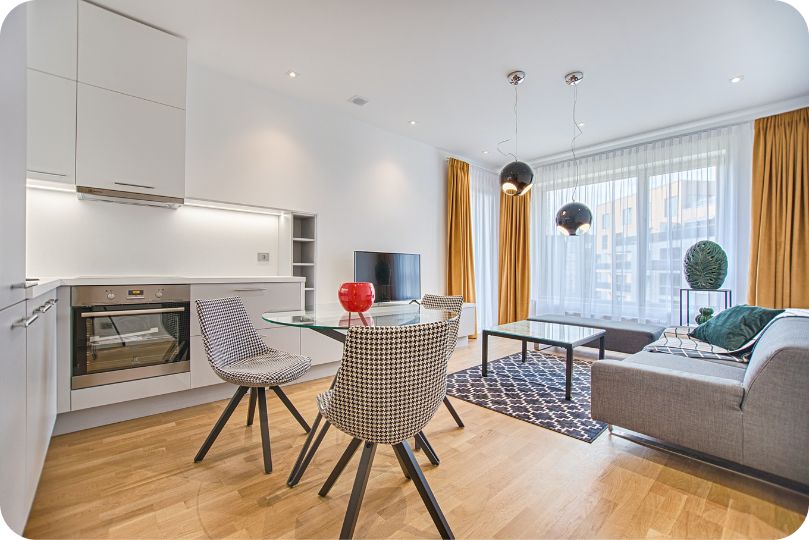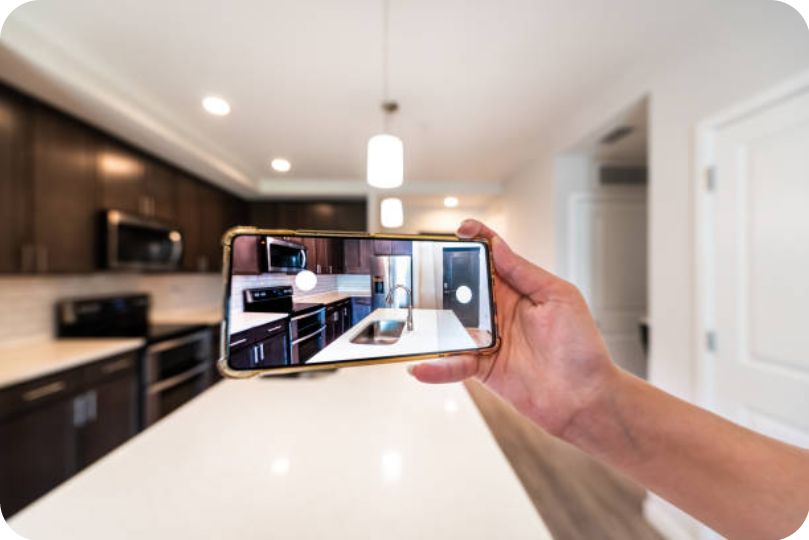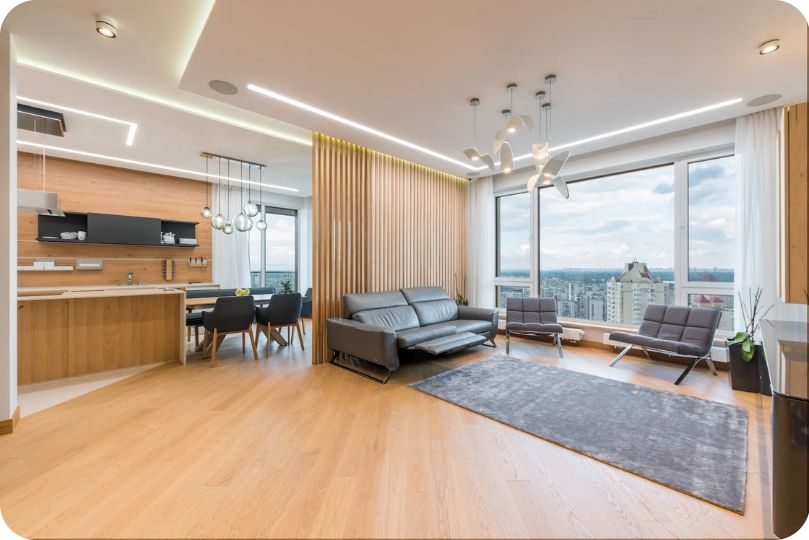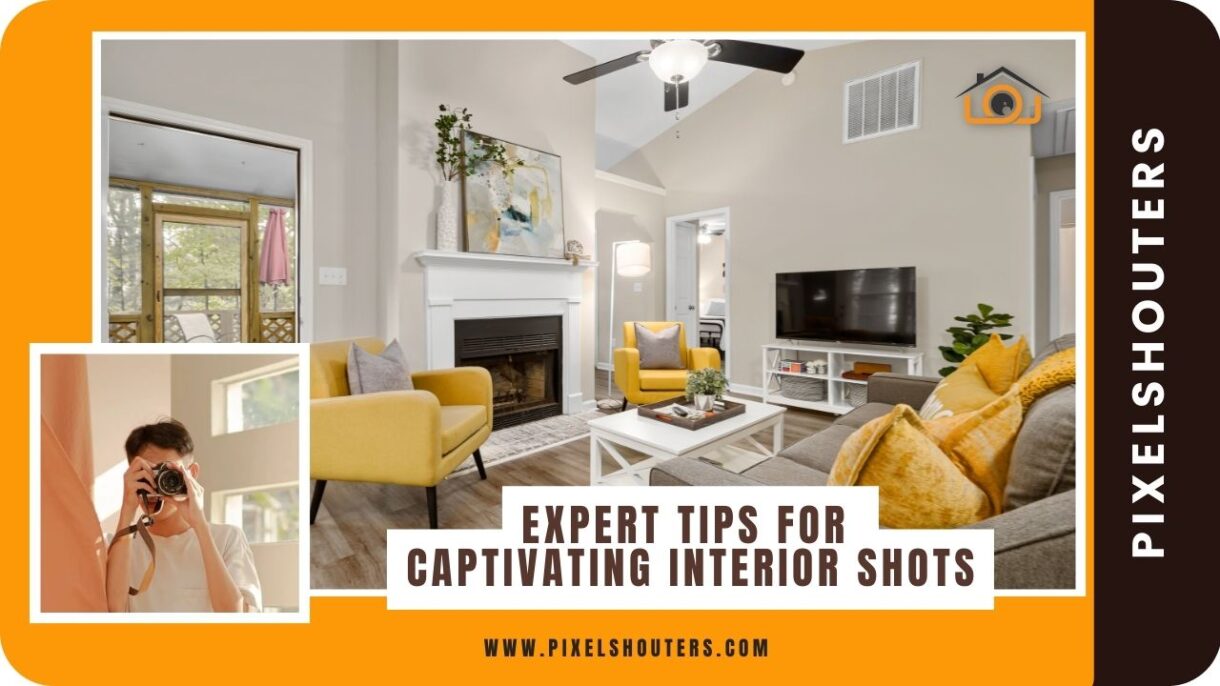Elevating Interior Photography: Expert Tips for Captivating Shots in 2023.
Interior photography is an art that requires a keen eye for detail, technical expertise, and a dash of creativity. Capturing the essence of interior spaces can be both challenging and rewarding. Whether you’re a professional photographer or an amateur looking to improve your interior photography skills, these nine pro tips will help you create stunning interior photographs that truly shine.
Table of Contents
1. Optimal Camera Settings for Interior Photography
- Manual Mode Mastery: Mastery of manual mode is the foundation of successful interior photography. By taking control of aperture, shutter speed, and ISO settings, you can tailor each shot to the unique lighting conditions of the space. Manual mode empowers you to make deliberate choices that reflect the mood and atmosphere you want to convey in your photographs.
- Optimal Aperture: Selecting the right aperture is crucial in interior photography. Opt for a higher aperture value, indicated by a lower f-stop number, to achieve a wider depth of field. As a result, more of the image will be in focus, from the front to the background. This is especially important when capturing spacious interiors where you want to showcase every design element clearly.

- Low ISO for Quality: Noise can detract from the quality of your interior photographs, particularly in low-light settings. To maintain image quality, opt for a lower ISO setting. This minimizes digital noise, resulting in clean, sharp images that accurately represent the details of the space. Remember, high ISO settings can introduce graininess that might diminish the overall impact of your shots.
- Steady Shutter Speed: Achieving sharpness in interior shots is paramount, and using a tripod is a photographer’s best friend in this scenario. When using a tripod, you can comfortably use a slower shutter speed without worrying about camera shake. This extended exposure time allows for proper lighting and clarity, even in spaces with limited natural light.
- Consider Natural Light: Natural light is a powerful tool in interior photography. It infuses your photographs with a sense of authenticity and warmth that artificial lighting can sometimes struggle to replicate. When possible, take advantage of windows and other natural light sources. They can create stunning contrasts between interior elements and the external environment, adding depth and dimension to your compositions.
By keeping these key considerations in mind and applying them to your interior photography practice, you’ll be well on your way to capturing stunning images that showcase the beauty and uniqueness of each space.
2. Choose the Right Gear for Photographing Interiors
Investing in the right equipment can significantly impact the quality of your interior photos.
- Wide-Angle Lens Advantage: A wide-angle lens, such as a 16-35mm, is an invaluable tool for interior photography. It allows you to capture the expansive feel of interior spaces, showcasing their depth and design elements. Wide-angle lenses excel at fitting large areas within the frame, providing viewers with a comprehensive view of the room’s layout.
- Tripod Stability: Stability is crucial in interior photography, particularly in low-light conditions. A sturdy tripod not only prevents camera shake but also enables longer exposure times. This is essential for capturing well-lit, noise-free shots, even in environments with minimal natural light. Choose a tripod with adjustable height and angles to suit various compositions.
- Remote Shutter Release: To further minimize any camera movement, invest in a remote shutter release or utilize your camera’s built-in timer function. These tools eliminate the need to touch the camera while taking the shot, ensuring that your images remain crisp and clear.

- Polarizing Filter Potential: A polarizing filter can help manage reflections and glare on reflective surfaces, such as glass windows and shiny furniture. By reducing unwanted reflections, you can capture interior shots with enhanced clarity and a more accurate representation of the space’s design elements.
- Flash and Lighting Considerations: While natural light is often preferred, having control over artificial lighting is essential for achieving the desired ambiance. Depending on the space, consider using off-camera flash, softboxes, or continuous lighting to fill in shadows and create a well-balanced illumination.
By carefully selecting the right gear for interior photography, you can ensure that you have the tools necessary to capture the nuances of each space while maintaining high-quality, captivating imagery.
3. Discover Interior Photography Techniques
Indoor lighting can be challenging, often leading to blurry images. To combat this, use a tripod to eliminate camera shake, and if possible, utilize natural light sources. If you’re shooting in low light, consider using a remote shutter release or your camera’s timer function to prevent touching the camera during exposure.
4. Organise and tidy up the interior space
Before you start shooting, ensure the space is clean and clutter-free. Arrange furniture and decor elements thoughtfully to create an inviting atmosphere. Clearing away distracting items allows viewers to focus on the design elements you’re highlighting.
5. Plan Ahead
Scout the location before your shoot and plan your compositions. Consider the angles that best showcase the design features. Create a shot list to ensure you cover all the essential aspects of the space. Planning ahead saves time during the shoot and helps you achieve consistent results.
6. Don’t Forget About the Details
Interior design is all about the details. Capture close-up shots of intricate textures, patterns, and decor elements. These shots add depth to your portfolio and allow viewers to appreciate the finer aspects of the design.
7. Do HDR Photography
High Dynamic Range (HDR) photography involves merging multiple exposures to capture a wider range of light and detail. This technique is especially useful in interiors where there might be stark contrasts between bright windows and darker interior areas. HDR photography ensures that both the exterior view and interior details are well-exposed.
8. Photo Compositing
In some cases, it’s beneficial to use photo compositing techniques. For instance, you can combine multiple shots taken with different lighting setups to achieve the perfect balance of ambient and artificial light. This process requires post-processing skills but can lead to stunning results.
9. Edit Your Pictures
- Enhance Colors and Contrast: Post-processing is a critical step in interior photography. Use editing software to enhance colors and adjust contrast. This step can help bring out the vibrant hues of decor elements and accentuate the visual appeal of the space.
- Correct Perspective Distortion: Interior shots can sometimes suffer from perspective distortion due to the use of wide-angle lenses. Use editing tools to correct this distortion and ensure that lines are straight and architectural elements appear natural.
- Balanced Exposure: In challenging lighting conditions, like interiors with bright windows and darker areas, achieving a balanced exposure can be tricky. Editing allows you to fine-tune exposure, ensuring that both interior details and exterior views are properly visible.

- Highlight Details: Editing software enables you to bring out intricate details that might not have been immediately noticeable in the original shot. Enhance textures, patterns, and subtle design elements to showcase the thought and effort put into the interior’s aesthetics.
- Noise Reduction: Even with careful settings, indoor shots can sometimes have a degree of digital noise, especially in low-light conditions. Utilize noise reduction tools to minimize graininess and present your images in a clean, professional manner.
- Maintain Natural Appearance: While editing can significantly improve your images, aim for a natural and realistic look. Over-editing can distort the true feel of the space and mislead viewers. Strive for an editing style that enhances without altering the inherent qualities of the interior.
- Batch Processing Efficiency: When working with multiple interior shots, consider using batch processing in your editing software. This efficient approach allows you to apply consistent adjustments across a series of images, maintaining a uniform visual style.
- Final Quality Check: Before finalizing your edits, conduct a thorough quality check. Zoom in to ensure details are sharp, colors are accurate, and no artifacts are present. This step guarantees that your images are polished and ready for presentation.
- Leverage Professional Editing Services: For those seeking a seamless and polished touch to their interior photography, consider outsourcing real estate photo editing to experts like PixelShouters. These professional editing services have a keen eye for detail and a deep understanding of enhancing interior shots. By partnering with PixelShouters, you can ensure that your images receive meticulous attention, resulting in stunning visuals that captivate your audience.
By incorporating these editing steps into your interior photography workflow, you can refine your images to showcase the space’s true essence while ensuring a professional and appealing final product.
Which Hashtags Work Best for Interior Design?
To gain visibility on social media platforms like Instagram, make use of relevant hashtags such as #InteriorDesignInspiration, #HomeDecor, #InteriorPhotography, and #DesignLovers. Hashtags connect your work with a wider audience of design enthusiasts, potential clients, and fellow photographers.
Additional Advice for Aspiring Interior Photographers
- Study Lighting: Understand different lighting techniques, such as ambient light, natural light, and artificial light. Learn to balance and manipulate these sources for compelling shots.
- Experiment with Angles: Play with various angles to find the most flattering perspectives. Sometimes shooting from a lower angle can make a room appear more spacious and inviting.
- Develop Editing Skills: Invest time in learning post-processing techniques. Editing can turn a good photo into a remarkable one.
How Do Real Estate Agents Want Interior Photos?
Real estate agents often seek interior photos that highlight the key selling points of a property. This includes well-lit rooms, spacious layouts, and attractive design features. Clear and accurate representations of the space are crucial for enticing potential buyers.
How Do Interior Photography and Interior Design Photography Differ?
While the terms are sometimes used interchangeably, there is a subtle difference between interior design photography and interior photography. Interior design photography focuses on showcasing the design elements and aesthetics of a space. Interior photography, on the other hand, captures the overall ambiance and mood of the interior.
Final Words
Mastering the art of interior photography takes time and practice, but the results are well worth the effort. By following these nine pro tips and continuously honing your skills, you can create captivating interior photographs that leave a lasting impression. Remember, each space has its own unique story to tell, and your role as a photographer is to bring that story to life through your lens.

[…] Removing such gadgets requires a keen eye and a hard and fast of well-honed and easy enhancing techniques. Let’s discover four easy but effective techniques that may elevate your interior photo enhancing skills. […]